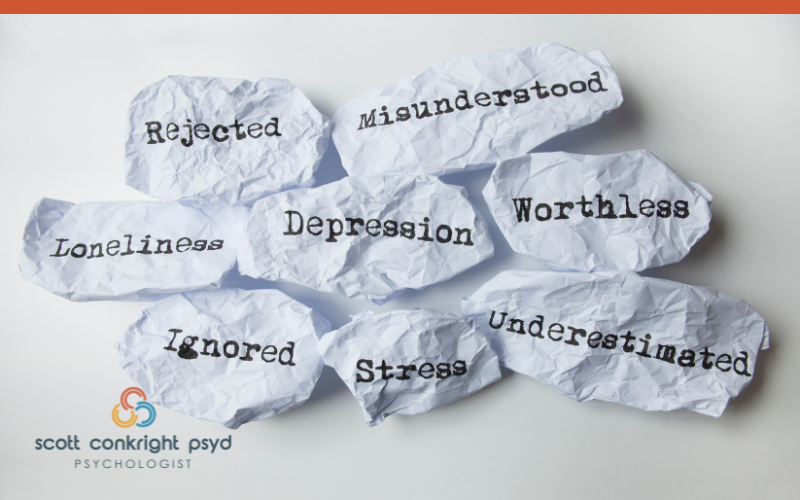The Rules for Healthy Disagreement: Extended Version

A.R.T.-Based Guidelines for Resolving Differences
Healthy Disagreement and Affective Awareness
Disagreements and differences are an inevitable and expected part of any relationship. This reassurance can help you navigate these moments confidently, knowing they are not signs of failure but growth opportunities. Understanding the foundation of emotions and how they influence our responses is crucial for navigating disagreements healthily.
Affect Relational Theory (A.R.T.) understands human motivation as coming from our initial feeling responses, or ‘affects,’ which are the biological reactions we have to events in the world, often occurring before we realize it. These affects—such as interest, enjoyment, distress, or anger—are universal. They are feeling states that we experience as reactions, such as the feelings we have when we feel disgusted, irritated, surprised, or embarrassed.
We don’t learn these feeling states; we are born knowing them. They get activated, and then we reflect on them. While we can’t control the affects themselves, we can learn to recognize and manage them. This empowerment in managing your emotional responses is essential in moments of disagreement, giving you a sense of control and confidence in your relationships.
Don’t let conflict ruin your relationships.
Take the first step toward healthier communication today by contacting Dr. Scott Conkright.
A.R.T. Basics and The Conkright Blueprint for Thriving Intimate Relationships
In every intimate relationship, our feeling states (affect system) shape how we connect, communicate, and manage differences. Feelings—whether pleasant or painful—influence the quality of our relationships with ourselves and others.
A.R.T. consists of several foundational principles. I will list and explain them briefly and provide real-life examples of how these principles can be applied in various relationship scenarios, such as a couple dealing with a disagreement about finances or a family navigating a conflict over parenting decisions.
- Our feeling states are our primary source of motivation for our thinking, believing, and behaving.
- Our feeling states have three sources:
- The nine affects:
What makes things urgent?
The affects, both positive and negative. Our curiosity is a feeling state, as it is for adults (Interest-Excitement), as is feeling affectionate (Enjoyment-Joy). Failure to meet these needs leads to shame, anger, and distress.
We are all wired for these two affects. It’s what love is. Negative affects interfere with our ability to love.
- The drives: eating, sleeping, defecating, urinating, breathing, and sexing. If any of these drives become too urgent, they become the focus of motivation. If you have or have had kids, you know this very well. And what makes the drives feel urgent? The affects! Hangry combines the hunger drive and distress/anger, depending on the urgency.
- Physical Pain: Pain is a critical motivator that alerts us to immediate threats or damage to our physical well-being. When we experience pain, our body signals that something needs attention, prompting us to take action, whether seeking relief, avoiding further harm, or addressing an underlying issue. Pain drives us to protect ourselves, ensuring we take the necessary steps to recover and prevent future damage. It acts as a biological warning system, motivating quick responses to preserve our health and safety. For urgency, pain primarily activates the negative affects of fear and distress, depending on the type of pain involved.
These three sources of motivation also bring the world around us and our self-awareness into existence. Without these three stimuli, there would not be consciousness. Thinking and reflecting are cognitive processes that can be recreated in AI, which performs cognitive equations faster than humans. But AI does not, and likely never will, have motivation. It is not interested in the data it crunches. We are interested in the process and outcome when we think, especially reflective thinking. We are motivated to think through the affect of Interest-Excitement.
- Most relational difficulties, and the majority of mental health-related issues, are the outcome of problems with affect and motivation. When Interest-Excitement and Enjoyment-Joy are blocked in some way, it results in a predominance of negative affect.
- Shame (and the defenses against it) is the primary affect that interferes with developing and maintaining healthy relationships.
Psychologically healthy relationships are best maintained by following what Silvan Tomkins, the originator of affect theory, called “the blueprint.” This blueprint is a set of guidelines for maintaining healthy intimacy, which includes maximizing positive emotional experiences, minimizing negative emotional experiences, and expressing all emotions openly. I have adapted it for the specific needs of couples and families, and it could also apply to any group of two or more with a commitment to healthy intimacy.
I suggest couples commit to each other to abide by the Conkright Blueprint as best as possible. The blueprint is aspirational – it is meant to be used as a guide. It is best used as a reminder of why people commit to a relationship in the first place – they find each other unique, if not irreplaceable, sources of Interest-Excitement and Enjoyment-Joy. If there are different reasons why two or more people came together that are not based on these two positive affects, such as convenience or mutual benefit, then it is not an intimate relationship but a relationship somewhere on the transactional continuum.
The Conkright Blueprint
- Maximize positive emotional experiences: Sharing moments of joy, affection, and excitement nurtures connection and trust between partners.
- Minimize negative emotional experiences: Negative emotions such as frustration, shame, anger, or disappointment are natural, but reducing their impact through constructive communication helps preserve harmony and prevents long-term damage.
- Express all emotions openly: A relationship thrives when both partners feel safe to express their feelings honestly, without fear of judgment or rejection. Open emotional expression fosters deeper intimacy and mutual understanding, making both partners feel more connected and heard.
- Understand and minimize shame dynamics: Shame is often hidden but plays a significant role in eroding connection. Recognizing and addressing shame through empathy, understanding, and non-judgmental communication makes both partners feel valued and emotionally safe. This empathetic approach fosters a deeper understanding and connection between partners.
Commit to emotional/affective safety and vulnerability: The strength of a relationship depends on creating a space where both partners feel emotionally/affectively safe to express their needs, desires, and vulnerabilities. Anything that helps increase positive feelings, reduce unnecessary negativity, openly express feelings, and minimize shame strengthens the relationship. Conversely, anything that interferes with these principles—such as suppressing feelings, avoiding conflict, or allowing shame to fester—can weaken the connection. Understanding these dynamics is essential to building a secure and thriving partnership.
The 12 Basic Rules
Recognize Affects Before Reacting
Before you respond in an argument, take a moment to identify what you’re feeling at the affect level. Are you feeling interest, distress, shame, or anger? What is the predominant one you are experiencing, the other is experiencing, and the one (s) you are experiencing as a couple? They may not always be the same. Understanding the underlying affect helps you communicate more effectively and empowers you, putting you in control of your reactions in the conflict resolution process.
Click here for the Affect Cheat Sheet.
Why:
Recognizing affects before reacting is not just a tool; it’s a source of empowerment. It allows individuals to pinpoint the core emotional triggers behind their reactions, putting them in control of their emotional responses. Affects like interest, distress, shame, or anger are innate, biological responses that inform how we feel and act in a given moment. When we don’t recognize these underlying affects, we risk reacting impulsively, which can escalate conflict and misunderstandings. By taking a moment to identify the specific affect, individuals can communicate their feelings with greater clarity, reducing the chances of misinterpretation. This practice also creates space for introspection, allowing individuals to respond rather than react, making conflict resolution more thoughtful and effective.
Furthermore, recognizing affects puts individuals back in control of their emotional responses, an empowering aspect of conflict management. A.R.T. teaches that affects like shame or distress, when unacknowledged, can spiral into defensive behaviors or emotional shutdown. However, when we can name and understand these affects, we regain control of the conversation and can steer it toward a more productive direction. This not only helps in regulating our own emotional states but also invites the other person into a more empathetic and open dialogue. In sum, identifying affects before reacting promotes emotional clarity and relational health, creating a safer space for both partners to resolve conflict constructively.

Take Responsibility for Your Own Feelings
Own your feelings without projecting them onto your partner. Instead of saying, “You make me feel…,” try “I’m feeling… because…”
Why:
Taking responsibility for your own feelings is essential because it fosters self-awareness and prevents destructive blame cycles in relationships. When individuals project their emotional experiences onto their partner—using language like “You make me feel…”—they implicitly blame their affective state on the other person. This can escalate conflict, as the partner may feel attacked or defensive, diverting the conversation from understanding the emotional response’s true source. Shifting the focus to “I’m feeling… because…,” individuals own their affective experience, which helps clarify the emotions at play without making the partner feel responsible. This approach encourages more productive communication and accountability in resolving conflicts.
Moreover, this practice aligns with A.R.T.’s emphasis on affect recognition and emotional intelligence. When you own your feelings, you acknowledge the internal affect driving your emotional response—shame, distress, or anger—without projecting those feelings outward. This level of self-awareness deepens your understanding of your own emotional state and invites empathy from your partner, shifting the tone from accusation to personal reflection. Taking responsibility for one’s emotions transforms conflict from a battle of blame into an opportunity for mutual growth and understanding, critical to maintaining healthy and emotionally intelligent relationships.
Use ‘I’ Statements
Frame your concerns with “I feel” or “I need” rather than blaming statements. This fosters empathy and reduces defensiveness.
Why:
From an Affect Relational Theory (A.R.T.) viewpoint, using “I” statements is crucial because it encourages self-expression in a way that fosters empathy and reduces defensiveness. By framing your concerns with “I feel” or “I need,” you shift the focus from blaming or attacking your partner to sharing your personal affective experience. This approach opens up a space for emotional transparency, allowing your partner to understand your feelings without feeling criticized. Blaming statements, however, often trigger defensiveness, as the other person feels attacked and is less likely to engage empathetically. Using “I” statements helps maintain the emotional safety needed for productive conversations and conflict resolution, making your partner feel understood and respected.
Additionally, “I” statements align with A.R.T.’s emphasis on affect awareness by helping individuals communicate their feelings more clearly and directly. Instead of blaming your partner for your emotional state, you’re identifying and owning the underlying affect—whether it’s distress, shame, or anger. This self-awareness reduces the chances of emotional escalation because it keeps the focus on your internal experience rather than shifting the blame outward. By fostering empathy and mutual understanding, using “I” statements helps build stronger, more resilient emotional connections in relationships.
Stay in the Present Moment
Focus on the issue at hand and avoid bringing up past grievances. This helps maintain a clear focus and reduces the emotional burden of unresolved issues.
Why:
From an Affect Relational Theory (A.R.T.) perspective, staying in the present moment is not just a suggestion; it’s a strategy for efficient conflict resolution. It allows individuals to address their current emotional experience without being weighed down by past grievances. When conflicts are overloaded with unresolved past issues, the affective focus becomes blurred, making it difficult to resolve the immediate concern. This intensifies affective responses like shame, distress, or anger and complicates the conflict-resolution process by introducing historical baggage that can overwhelm both partners. By staying present, you maintain clarity on the specific affective trigger at the moment, making it easier to find solutions and de-escalate the situation.
Focusing on the present moment also prevents emotional burnout in relationships by reducing the burden of unresolved grievances. Rehashing past conflicts creates a continuous cycle of shame and distress, where positive affect—such as enjoyment or interest—is repeatedly interrupted. Staying focused on the current issue allows both partners to engage constructively without the added emotional weight of unresolved past issues. This approach fosters a healthier relational dynamic where both partners can move forward rather than getting stuck in repetitive conflict patterns.
Take Breaks When Needed
If emotions start to overwhelm the conversation, it’s okay to pause. Use the time to self-regulate, breathe, and assess the affect driving your response.
Why:
Taking breaks when needed is essential because it allows individuals to step away from overwhelming emotions, giving them time to self-regulate and assess the affect driving their reactions. When emotions like shame, distress, or anger reach high levels during a conversation, they can cloud judgment and escalate conflict, making it difficult to communicate constructively. Pausing the conversation provides space to regain emotional balance, helping you understand whether the primary affect at play is distress, frustration, or even a deeper sense of shame. This self-awareness leads to more mindful, measured responses when the conversation resumes.
Moreover, taking breaks supports relational health by preventing emotional overload and burnout. In heated moments, unresolved negative affects can build on one another, intensifying the emotional strain in the relationship. By pausing to breathe and reflect, both partners can regain composure and approach the conversation with fresh perspective and reduced tension. A break doesn’t signal avoidance; instead, it allows for the internal processing of emotions, ensuring that the conversation continues in a more constructive, less reactive manner. This practice helps preserve the emotional safety in the relationship, fostering healthier communication and conflict resolution.

Acknowledge and Respect Shame
Conflict can trigger shame. Acknowledging and respecting this affect is crucial as a signal to slow down, reflect, and seek understanding. This approach validates your partner’s feelings and fosters more empathetic and respectful communication, enhancing your understanding of each other.
Why:
From an Affect Relational Theory (A.R.T.) perspective, acknowledging and respecting shame is critical because shame is often a powerful, unspoken emotion interrupting positive affect, such as joy or interest, in conflict situations. When shame is triggered, it signals a deep sense of vulnerability, causing individuals to withdraw, avoid, or become defensive. Not recognizing and addressing this affect can escalate the conflict or lead to emotional disconnection. By acknowledging shame—both in oneself and the other person—you validate the experience and create space for reflection and understanding, slowing down the reactive cycle and preventing further harm.
Respecting shame as an affect also fosters more empathetic and respectful communication. In many conflicts, shame is dismissed or overlooked, leading to a breakdown in emotional safety. When shame is honored as a natural, though painful, signal, it shifts the conversation from blame or defensiveness to one of mutual respect and compassion. By recognizing the presence of shame, both partners are invited to approach the conflict with greater emotional intelligence and care, focusing on restoring the positive affective connection rather than exacerbating negative emotions. This approach ultimately leads to healthier, more emotionally secure relationships.
Discover the transformative power of emotional intelligence.
Schedule a session with Dr. Scott Conkright and learn to build stronger, more fulfilling relationships.
Listen to Understand, Not to Respond
Practice active listening. Show genuine interest-excitement in your partner’s point of view without planning your rebuttal while they speak.
Why:
From an Affect Relational Theory (A.R.T.) viewpoint, listening to understand rather than to respond is essential because it aligns with the affect of interest-excitement, which is fundamental to maintaining connection and curiosity in a relationship. When partners actively listen with genuine interest, they engage with each other’s emotions and thoughts, fostering an environment of empathy and open communication. In contrast, when one listens only to prepare a rebuttal, the focus shifts away from understanding and toward winning the argument, which disrupts positive affect and often triggers defensive responses. This shift can block emotional connection and escalate the conflict.
By practicing active listening, you honor your partner’s emotional experience, which reduces the chances of negative affects like shame or distress being triggered. When a partner feels truly heard, it strengthens the relational bond and encourages more honest, open conversations. Listening with the intention of understanding rather than responding allows both partners to approach conflicts with curiosity rather than combativeness, helping preserve the emotional safety necessary for long-term relational health. This practice reinforces the idea that each partner’s feelings and perspectives are valued, paving the way for deeper trust and resolution.
No Name-Calling or Demeaning Language
Avoid using shame-inducing language. Words that humiliate or belittle shut down productive communication and damage trust.
Why:
From an Affect Relational Theory (A.R.T.) perspective, avoiding name-calling or demeaning language is crucial because such language directly triggers shame, one of the most influential and disruptive affects. When someone uses words that belittle or humiliate, it signals to the recipient that their value is diminished, interrupting any positive affect like interest or joy in the conversation. This shame-inducing language causes the person to withdraw, defend, or shut down emotionally, making it nearly impossible to resolve conflicts constructively. The use of harsh or demeaning words erodes the trust and emotional safety necessary for healthy communication, turning the conflict into a harmful cycle rather than a growth opportunity.
Moreover, using demeaning language damages the relational bond by fostering resentment, deepening feelings of inadequacy, and creating emotional distance. A.R.T. emphasizes the importance of maintaining positive affect and minimizing negative ones like shame or distress. Avoiding name-calling helps protect the emotional space where both partners can engage constructively without fear of personal attacks. By respecting each other’s dignity and refraining from language that humiliates, partners are more likely to maintain trust, repair emotional ruptures, and sustain healthy, respectful communication, strengthening the relationship overall.
Offer Repair Attempts
If a conversation goes off track, suggest a way to return to a more constructive tone. This can be as simple as acknowledging a misunderstanding and offering a solution.
Why:
From an Affect Relational Theory (A.R.T.) perspective, offering repair attempts is essential because it helps restore the positive affect that may have been interrupted during a conflict. Conflicts often lead to distress, shame, or anger, derailing constructive communication and creating emotional distance between partners. By acknowledging a misunderstanding or suggesting a solution, you signal a willingness to reconnect and restore the emotional equilibrium of the relationship. Repair attempts shift the focus from the conflict to the emotional health of the relationship, allowing both partners to move away from negative affect and back toward a more constructive and compassionate tone.
In A.R.T., repair attempts are viewed as critical for maintaining relational resilience. When a conversation veers off track, offering a way to return to a constructive tone helps preserve emotional safety and trust. This act demonstrates affective and relational intelligence, showing an awareness of the emotional dynamics and a commitment to re-engage positively. Even small gestures of repair, such as acknowledging a misstep or offering a compromise, can prevent shame from deepening and distress from escalating, thus ensuring that conflicts don’t lead to long-term emotional ruptures. Repair attempts foster the emotional connection that makes the relationship worthwhile, even during the tough times.

End on a Positive Note
Before concluding a difficult conversation, take a moment to reaffirm your interest in the relationship and express gratitude for your partner’s willingness to engage. Ending on a positive note leaves room for hope and optimism about the future of your relationship but also strengthens your bond.
Why:
From an Affect Relational Theory (A.R.T.) perspective, ending a conversation on a positive note is vital because it reinforces the positive affect necessary for maintaining connection, even after difficult discussions. Conflict often interrupts positive feelings like interest and joy, leaving distress, frustration, or shame behind. By taking the time to reaffirm your interest in the relationship and express gratitude for your partner’s willingness to engage, you restore those positive affects. This creates emotional closure, ensuring the conversation doesn’t end in negative or unresolved emotions, which can foster lingering resentment or insecurity.
Ending positively also fosters hope and optimism, two essential components for sustaining long-term emotional bonds. In A.R.T., relationships thrive on moments that affirm emotional safety and mutual interest. Even after a challenging conversation, showing appreciation and highlighting the value of the relationship helps both partners feel seen and respected. This practice cultivates resilience in the relationship, signaling that the core emotional connection remains intact and strong despite moments of conflict. By leaving room for positive affect at the end of a conflict, you create a foundation for future conversations to be more open and constructive.
Important Note:
It’s important to acknowledge that not every conversation can easily end on a positive note, especially when emotions run high. However, even in these moments, an effort should be made to recognize that the conversation is taking place because both parties are committed to working together and investing in the relationship. Doing so shifts the focus from immediate resolution to long-term partnership and collaboration.
Here are a few statements that can help convey this sentiment when ending on a purely positive note isn’t possible:
- “Even though this is a hard conversation, I’m glad we’re having it because it means we care about each other and this relationship.”
- “I know this is tough, but I’m grateful we’re having this conversation because it shows we both care about making this work.”
- “We may disagree right now, but I appreciate that we’re trying to understand each other. I’m committed to working through this with you.”
- “It’s clear we’re both feeling frustrated, but I want you to know that we’re on the same team, and I believe we’ll get through this.”
- “This isn’t easy, but I want you to know that I’m here, and I value our commitment to working through difficult moments like this.”
These statements help reaffirm the investment in the relationship while acknowledging the challenge of the moment, keeping the door open for future resolution. Would you like to refine or expand on any of these statements?

Don’t Involve Third Parties:
While discussing concerns within the relationship is essential, bringing in friends, family, or children during conflicts can complicate and strain relationships. Keep fights between partners unless you’re seeking professional help.
Why:
From an Affect Relational Theory (A.R.T.) perspective, involving third parties in conflicts disrupts the affective dynamic between partners and introduces multiple layers of shame, distress, and disconnection. A.R.T. emphasizes the critical role that affects play in relational interactions—specifically how they signal emotional safety or threat. In a conflict, both partners are already managing negative affects such as distress, anger, or shame, which arise from their unmet needs or unspoken emotions. When a third party is brought into the disagreement, the original affective signals become diluted, and instead of focusing on repairing the immediate relational rupture, attention shifts to managing the shame and vulnerability in the presence of an outsider.
This intensifies the negative affect cycle, as both partners may feel judged, misunderstood, or ganged up on, which exacerbates feelings of inadequacy and fear of rejection. Additionally, involving third parties, especially family members or children, introduces power imbalances that can trigger shame in more subtle but enduring ways. For example, children witnessing a conflict can experience vicarious distress and shame, even if they are not directly involved, which harms the relationship dynamics within the family as a whole. A.R.T. advocates that maintaining emotional safety is crucial in any dyadic or non-dyadic relationship.
By keeping conflicts within the core group of people involved in the relationship and limiting outside involvement to professional help if needed, all parties can navigate the affects of shame, fear, and anger more directly and constructively. This approach strengthens the bonds within the relationship and fosters a shared sense of mastery over the conflict, regardless of the structure of the relationship.
Are you struggling to navigate disagreements in your relationships?
Dr. Scott Conkright’s therapy sessions can help you develop healthier communication skills and improve your emotional well-being.
Avoid Threatening Breakups:
Mentioning divorce or breakup during an argument can escalate fear and insecurity, which undermines the sense of safety in the relationship. Even if said in the heat of the moment, it may cause long-term damage.
Why:
From an Affect Relational Theory (A.R.T.) perspective, mentioning divorce or breakup during an argument introduces a powerful affective trigger that can escalate feelings of distress and fear, directly threatening emotional safety. A.R.T. emphasizes that the affect system is biologically designed to signal threats and opportunities for connection, and mentioning the potential end of the relationship signals an existential threat to the bond. This triggers intense feelings of shame, fear, and insecurity in both parties, which disrupts the capacity to resolve the underlying conflict.
The moment such a severe outcome is raised, the focus shifts from solving the problem to a fight-or-flight response driven by the fear of abandonment. Even if spoken in the heat of the moment, these words leave a lasting impact, planting seeds of doubt about the stability and safety of the relationship.
Over time, this erodes trust, making future conflicts more charged with fear and shame and potentially leading to chronic emotional disengagement, as both partners may start protecting themselves from further pain rather than working together toward resolution. A.R.T. encourages focusing on the immediate affects of conflict, like distress, anger, or shame, rather than introducing ultimate threats that undermine emotional security.

Are you ready to transform your relationships?
Dr. Scott Conkright can help you develop healthier communication skills and improve your emotional well-being.
Contact us at (404) 315-7150 or HERE to get started!



